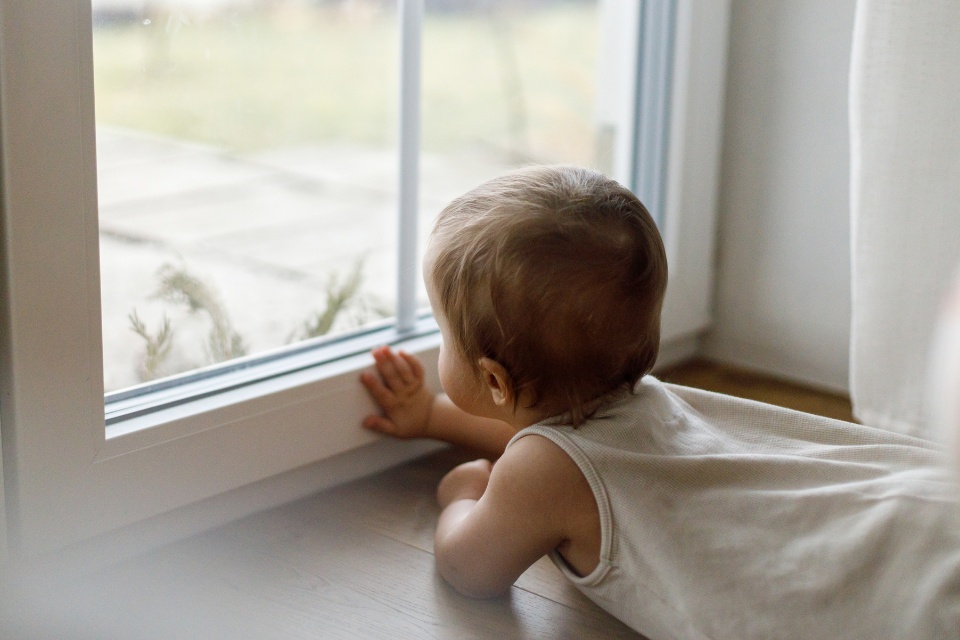Bringing a baby into your home is an exciting milestone, but it comes with new responsibilities. Babyproofing your home means looking beyond the obvious hazards and creating a space where your child can safely explore, play, and grow. From the nursery to the kitchen, taking proactive steps now gives you peace of mind and ensures your little one is protected as they discover the world around them.
Babyproofing Your Home for a Safe Environment
Securing Furniture and Appliances
Babies love to pull themselves up on anything within reach. Heavy furniture like dressers, bookshelves, and entertainment centers can tip if not properly anchored. Securing them to the wall with brackets or straps ensures stability. The same goes for large appliances, such as ovens or refrigerators. A child tugging on the door or climbing on furniture creates a tipping hazard, even if they seem sturdy. Think of anchoring as a must-have, not an option.
Making Electrical Safety a Priority
Electrical outlets are right at eye level for crawling babies, which makes them particularly tempting. Covering all outlets with safety caps or sliding covers is one of the most straightforward yet most important steps. Also, keep cords out of reach and avoid leaving power strips exposed. Tucking cords behind furniture or using cord organizers keeps them out of sight and reduces the risk of shock and strangulation hazards.
Eliminating Choking Hazards
Surprisingly, many small objects find their way onto floors, tables, and shelves. Babies explore with their hands and mouths, so anything small enough to fit through a toilet paper roll is a potential choking hazard. Pay special attention to coins, batteries, jewelry, and small toy parts. Keeping surfaces clear and storing these items in closed containers will make your space safer without sacrificing organization.
Babyproofing Your Home: Installing Safety Gates
Once your baby starts crawling, stairs become one of the biggest risks in the home. Sturdy safety gates at the top and bottom of staircases are essential. Gates also help keep babies out of rooms that aren’t fully babyproofed, like kitchens or laundry areas. For maximum safety, opt for gates that attach securely to walls rather than pressure-mounted gates at the top of stairs.
Bathroom Precautions
Bathrooms are full of hidden dangers. Always keep toilet lids closed and consider using a toilet lock to prevent curious hands from reaching inside. Medications, cleaning products, and toiletries should be stored in high cabinets or locked drawers. Non-slip mats in the tub reduce the risk of falls during bath time, while faucet covers help prevent bumps and burns.
Kitchen Safety Measures
The kitchen is a central hub of the home, but it’s also hazardous. Use stove knob covers to prevent accidental burner ignition, and consider installing an oven lock. Keep knives, scissors, and other sharp objects in locked drawers or high cabinets. Babyproofing latches on lower cabinets helps restrict access to pots, pans, and cleaning supplies. Even everyday items like plastic bags should be stored out of reach to prevent suffocation hazards.
Window and Door Safety
Windows may seem harmless, but open ones pose a falling risk, especially on higher floors. Installing window guards or stops allows for ventilation without creating danger. Avoid placing cribs or play areas near windows to discourage climbing. For doors, consider finger pinch guards that prevent little hands from getting caught in hinges, and use door knob covers to keep babies from entering restricted rooms.
Creating Safe Play Zones
Designating specific areas for your baby to play gives them freedom to explore and gives you confidence that they’re in a safe environment. Soft flooring, such as rugs or foam mats, cushions falls and makes crawling more comfortable. Rotate toys regularly to keep things interesting while ensuring they’re age-appropriate and free from small parts. A safe play zone allows your baby to develop independence while reducing your stress.
Babyproofing Your Home as They Grow
Babyproofing isn’t a one-time project. As children grow, they reach new stages of mobility and curiosity. What worked for a crawling infant may not be enough for a climbing toddler. Reassessing your home regularly helps you stay ahead of potential hazards. Think of babyproofing as an evolving process that adapts alongside your child’s growth.
FAQs About Babyproofing Your Home
When should I start babyproofing my home?
It’s best to begin before your baby becomes mobile—usually around 6 months. Preparing early gives you time to make adjustments without feeling rushed.
Do I need to babyproof every room?
Focus on the areas your baby will spend the most time in, like living rooms, bedrooms, and kitchens. However, it’s smart to add basic protections, such as outlet covers, throughout the house.
Are safety gates necessary if I don’t have stairs?
Yes, gates are still useful for limiting access to unsafe rooms, such as bathrooms, kitchens, or storage areas.
How often should I reassess my babyproofing efforts?
Check every few months or whenever your baby reaches a new milestone, like crawling, standing, or walking. Each stage of development brings new safety challenges.
Can I babyproof my home without sacrificing style?
Absolutely. Many modern babyproofing products are designed to blend into your home’s decor. Look for sleek safety gates, discreet outlet covers, and furniture anchors that keep your space safe without being intrusive.
Quantum Home Inspections offers professional home inspections in Southeast Georgia. Contact us to schedule an inspection today.
